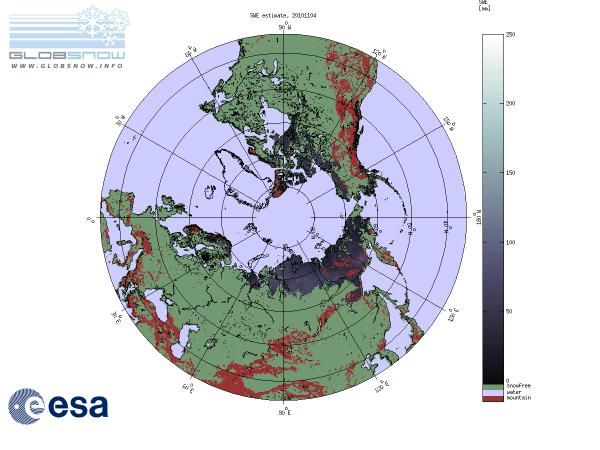Satellites Provide Up-to-Date Information on Snow Cover
Updatetime:2010-11-15From:
【Enlarge】【Reduce】
The European Space Agency´s (ESA) GlobSnow project, led by the Finnish Meteorological Institute, can map the extent and volume of snow cover especially on the northern hemisphere. Launched at the beginning of November, the service provides almost real-time data on snow cover and snow depth.
The purpose of this service, accessed through the GlobSnow website maintained by the Institute, is to create a global database containing the snow data gathered by satellites.
Global data on snow cover
Snowfall impedes transport but also causes floods in many countries. The seasons affect snow cover the most on the northern hemisphere. The average snow cover in winter extends over an area of 20-40 million square kilometres; in other words, the snow contains as much water as one billion Olympic swimming pools.
At the same time, the snow cover is one of the most important factors affecting the global climate, meteorology and water systems. Long distances between observation stations, especially in the sparsely-populated regions of Eurasia and North America, have made it difficult to chart snow and its volume at global level.
More accurate climate models
The data produced by satellites are used in the forecasting of floods and in climate research. In the coming year, many countries will test application of the new material for making hydrological models and flood forecasts. GlobSnow also provides climate researchers with snow data extending over the past 30 years.
Access to satellite data enables researchers to monitor and analyse climatic trends. It has been discovered, for instance, that the snow cover has shrunk globally; this is one indicator of climate change. The database also provides increasingly accurate input data for climate models, thereby further improving the quality and accuracy of climate models.

Example of a snow water equivalent map for 4 November 2010, generated by GlobSnow in near-real time for the northern hemisphere. (Credit: FMI/ESA GlobSnow)
Source: ScienceDaily
Nov. 12, 2010
Appendix




